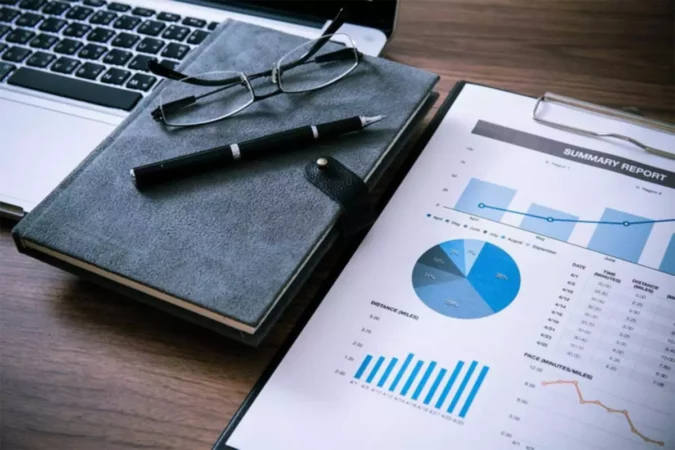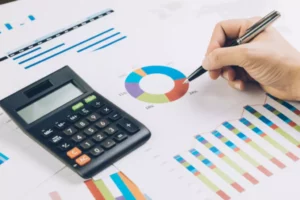A number always has to be assigned to an invoice, which affects the financial reporting and general documentation. Keep reading the article to learn what an invoice number is and why it’s important.
Invoice Definition
An invoice is a bill sent to a client by a vendor. It lists information about the product or services provided to a client who must pay for these products or services. A seller (vendor) creates and issues the invoice upon sending the product or providing services.
Invoice carries the most important data about the product or services, such as agreed-upon price, buyer’s name, etc. Typically, an invoice should include the following data:
- sales date;
- an ID;
- vendor name, its address, email, phone number.
- client name, its address, email, phone number.
- description of services or goods;
- price and number of products;
- date of products delivery or providing services;
- grand total;
- payment options.
The invoice may also include taxes needed to be paid, fee warnings (in case of payment delay), potential discounts for paying early, etc.
Understanding an Invoice Number
An invoice number (or ID) is a unique code assigned systematically to all invoices to track them if needed easily. ID is one of the most important details in an invoice since it ensures that the business properly records its income for tax and accounting purposes.
Each invoice must have a unique ID. It should be generated according to a preferred method (four methods are described further). An invoice can’t be considered a legal document without an ID.
The Importance of Invoice Numbers
Your invoice numbers are important for several reasons:
- To track payments. To get payments from customers, a business must have a proper tracking system. If a business has an issue with clients forgetting or delaying payments, ID numbers help identify those not processed invoices.
- To offer professional services. Assigning a number to an invoice eliminates a duplicate problem. A simple example is when a customer gets the same invoice twice. It can lead to the loss of customers.
- To document income for tax and accounting purposes. Businesses use invoices to prepare accounting documents to file for taxes properly. Having a logical invoicing system helps to avoid fines and penalties.
Overall, numbers assigned to invoices allow businesses to maintain a logical system and use it whenever needed.
Invoice vs. Receipt
An invoice is a document that the vendor issues to the client to inform them that payment is due. A receipt is also issued by the vendor, but it proves the payment has been made. Invoices do not require receipts; check the following examples to figure out why.
The Fresh Croissants bakery offers croissants delivery to several companies in Santa Fe. Bakery issues one of the restaurants an invoice for $965.00. According to the terms in the invoice, the restaurant has to pay within 30 days.
Two weeks after receiving the order, the restaurant makes a payment in a check. The bakery cashes the check. If any issues occur, the restaurant can contact the bank that will prove that the bakery cashed the check. It’s why a receipt isn’t necessary.
In another example, the bakery doesn’t issue an invoice. Bakery sends croissants to the restaurant, and the restaurant pays at that same moment. The bakery’s representative must issue a receipt that proves that the restaurant has paid to receive its products.
How to Generate Invoice Numbers
The most popular way of creating numbers is a sequential method, but it doesn’t mean you can’t use any other option. The decision should be based on convenience and business needs. Typically, there are four methods of generating numbers:
- sequential;
- chronological;
- project-based;
- customer-based.
Here is how to generate numbers by using each of these methods.
Sequential
The sequential method is based on creating numbers by moving up numerically whenever creating a new invoice. A company can start with 1, 2, 3, … 29, and so on, or with 00001, 00002, 00003, etc. A typical way to start sequential numbering is 0000000001 — 9 zeros followed by a 1.
If using manual accounting methods, write down clients’ names and how much they owe in a separate document. Errors and typos occur all the time, and such a document will be a helpful reference. The sequential method is convenient when using an accounting software: the system automatically assigns numbers without any typos.
Chronological
A chronological method is more detailed since it carries information about the date of creating an invoice. Here is a simple example of chronological numbering:
- 20201030-001
The number carries information about creating the first invoice on October 30th, 2020. The second invoice during this day would look as follows:
- 20201030-002
Accountants use the following formats when numbering invoices:
- YYYYMMDD-001
- DDMMYYYY-001
- MMDDYYYY-001
It’s also possible to add a customer number to get personalized invoicing. It should look as follows:
- 20201030-109-001
“20201030” is the date, “109” is the customer’s number, and 001 is the number of invoices assigned to this client.
Project-Based
The project-based method references invoice through project numbers. It’s a great method used by businesses that have multiple projects or consider project numbers to be most important. For instance, construction companies or software developing businesses.
There are two methods to generate project-based numbers:
- customer number + project number + sequence number;
- project number + customer number + sequence number.
If the project has the number “TKLN108”, and the client number is 934, then the invoice could be one of two options:
- TKLN108-934-01;
- 934-TKLN108-01.
An example shows the first invoice in a sequence.
Customer-Based
The customer-based number allows both using and omitting the date. The invoice ID should begin with the client’s number, then goes the date (optional), and then the sequence number. Remember, the sequence part is always added at the end of the invoice to avoid confusion.
The sale for a client 1083, on December 12th, 2021, should look as follows:
- 1083-001;
- 1083-20211212-001.
The second example carries the date of a sale.


















